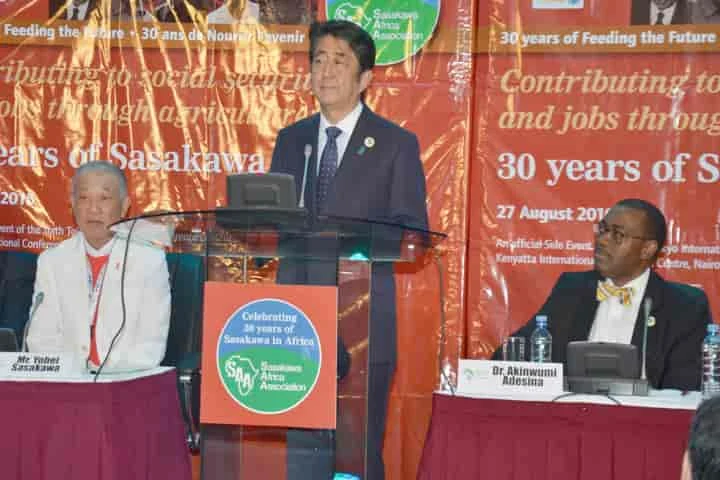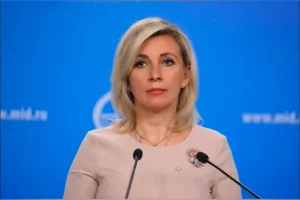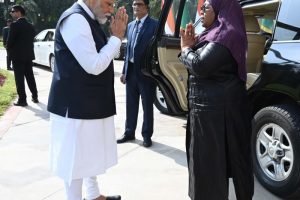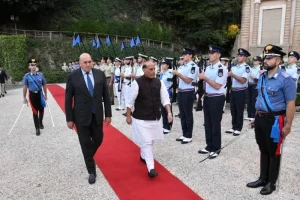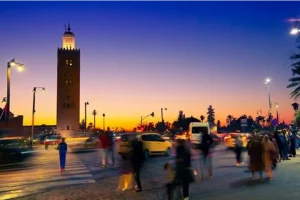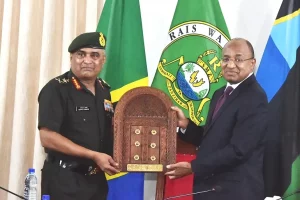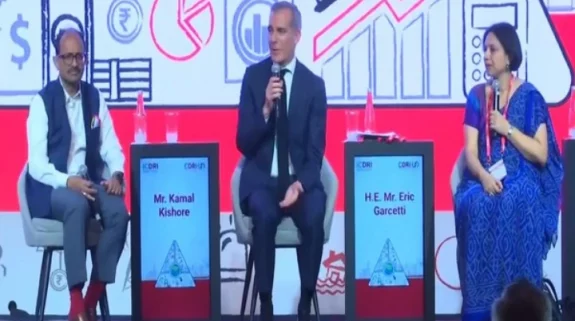Shinzo Abe (1954-2022) was an ardent champion of the construct of the “Indo-Pacific”. His "Confluence of the Two Seas" speech in the Indian Parliament, delivered in 2007, is widely believed to be the origin of the Indo-Pacific concept.
However, his speech at the Sixth Tokyo International Conference on African Development (TICAD) in 2016 is equally important. That speech brought Africa into the Indo-Pacific framework.
Although the concept of Indo-Pacific has been in vogue since the late 2000s, its geographic contours were limited to the western coastline of India. It was defined as the region stretching from "Bollywood to Hollywood".
However, Abe's Japan, in 2016, brought the entire Indian Ocean, including East and Southern Africa, into the geographic ambit of the Indo-Pacific. It stemmed from the conviction that the sea lanes that connect resource-rich Africa and West Asia to South and East Asia traverse the entirety of the Indian Ocean.
Since the late 2000s, Japan was expanding its strategic role in the Western Indian Ocean. In 2009, Japan began to dispatch ships for anti-piracy operations in the Gulf of Aden. In 2011, Japan went a step further and opened up its first overseas military base, since 1945, at Djibouti.
26 APR, JS ONAMI (DD 111) (Commander : CDR ISHIDERA Takahiko) departed Yokosuka Base as the 36th Deployment Surface Force for Counter Piracy Enforcement (DSPE) .
JS ONAMI will engage anti-pirate operation off Somalia and Gulf of Aden. pic.twitter.com/1eX1TnNaYu— Japan Maritime Self-Defense Force (@jmsdf_pao_eng) April 26, 2020
As Japan was boosting its strategic profile in the Indian Ocean, an artificial regional boundary, although drawn in water and hence fluid, could not hold. Such artificial constructs also limit mental imagination. Therefore, it was necessary to expand beyond the initial definitions of the Indo-Pacific.
Japan depends excessively on energy imports from West Asia and hopes to strengthen ties with African countries. In this context, moving westwards toward Africa is imperative. Moreover, the growing strategic presence of China in Africa and the Indian Ocean was a key factor to be considered as well. In this context, Abe delivered the speech at the TICAD Summit in Nairobi.
In his speech, Abe noted that “when you cross the seas of Asia and the Indian Ocean and come to Nairobi, you then understand very well that what connects Asia and Africa is the sea lanes”. He was clear that “what will give stability and prosperity to the world is none other than the enormous liveliness brought forth through the union of two free and open oceans and two continents”.
Japan promotes the idea of a “Free and Open Indo-Pacific” and Abe's speech articulated this idea. According to Abe, Japan “bears the responsibility of fostering the confluence of the Pacific and Indian Oceans and of Asia and Africa” and would turn it “into a place that values freedom, the rule of law, and the market economy, free from force or coercion”.
Abe argued that Japan would like to work with Africa to “make the seas that connect the two continents into peaceful seas that are governed by the rule of law”. He called for making “this stretch that is from Asia to Africa” a “main artery for growth and prosperity”.
🚨New episode of #BridgingTheOceans is out! @VeerleNouwens & @timwalker919 discuss how African states littoral to the Indian Ocean view the #IndoPacific, and reflect on the interplay of geopolitics with their development and security priorities.
🎧:https://t.co/e0n5Nz4HEo pic.twitter.com/vFAHfGPxnf
— RUSI (@RUSI_org) August 4, 2021
The growing Indo-Japanese strategic partnership also, likely, played a role in shaping the Japanese thinking about the geographic limits of the Indo-Pacific. For India, the Indian Ocean has always been a primary strategic theater, and bringing Africa into the Indo-Pacific construct was a signal from Japan to India that its priorities will be taken on board as well.
The point of promulgating a new region, transcending the traditional confines, was to consider the evolving strategic picture, especially the expansive activities of China in the interconnected region, in a holistic manner. Therefore, it made sense for Japan to include the Indian Ocean Africa in the Indo-Pacific framework.
In practical terms, the speech was an indication to African nations as well that besides China, there are other important players who are strengthening ties with Africa. Two subsequent events underscore the continued relevance of Abe’s approach. In 2017, when Asia-Africa Growth Corridor (AAGC) was envisaged as a counter to China’s Belt and Road Initiative (BRI), Africa was a key component of AAGC.
Later, when India unveiled its Indo-Pacific vision at the Shangri-La Dialogue in 2018, Africa was included in the Indo-Pacific framework. Therefore, the approach of Shinzo Abe has found wider acceptability and is now considered part of mainstream thinking on the Indo-Pacific.
(This is a revised version of the article for India Narrative that has been originally published by the Indian Council of World Affairs, New Delhi. It can be read here.)






